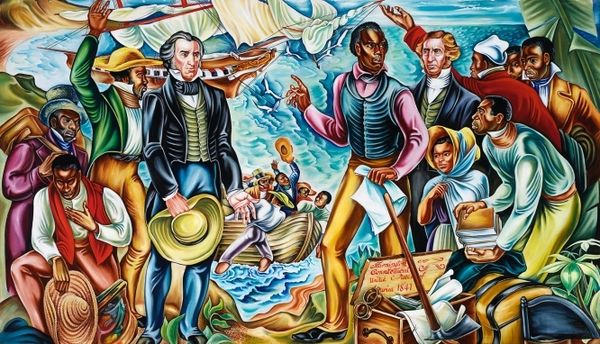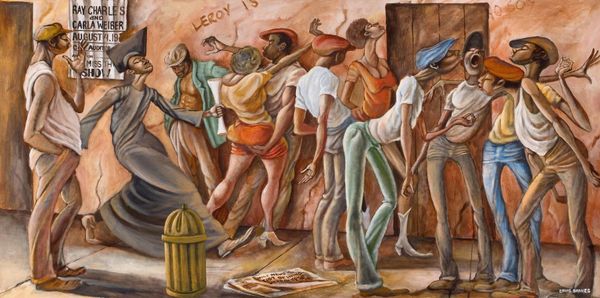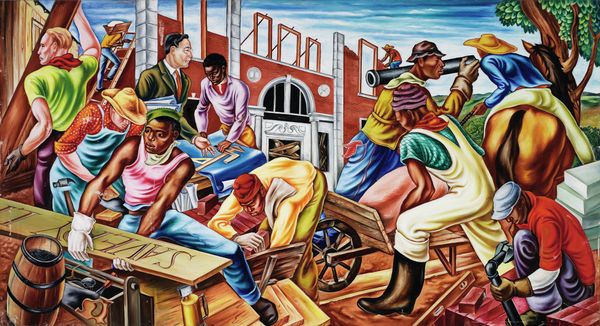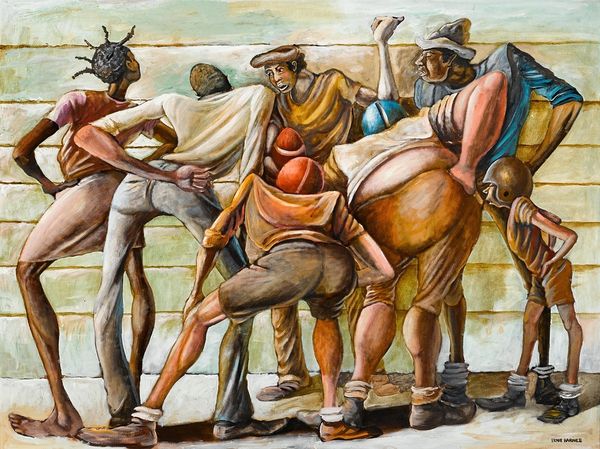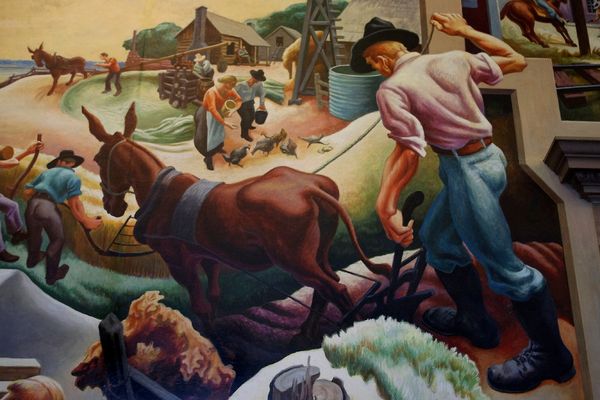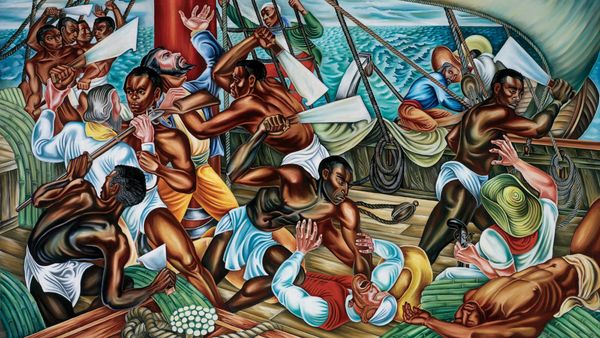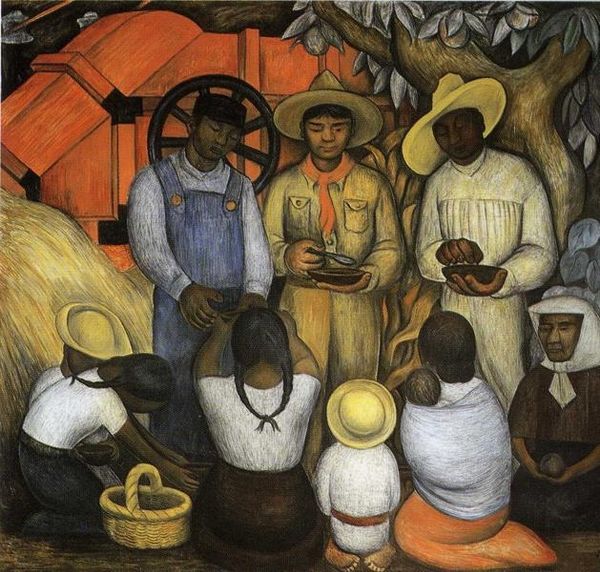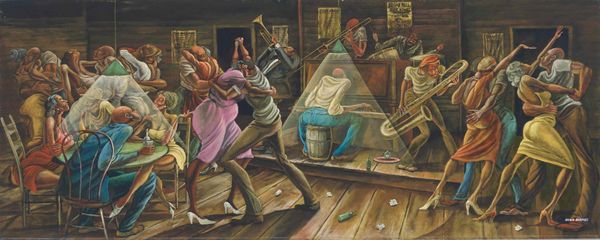
painting, oil-paint
#
narrative-art
#
painting
#
oil-paint
#
figuration
#
oil painting
#
naive art
#
mythology
#
genre-painting
#
history-painting
#
expressionist
#
realism
Copyright: Hale Woodruff,Fair Use
Curator: Hale Woodruff's oil painting, "Underground Railroad," completed in 1939, presents a fascinating depiction of this clandestine network. Editor: My first impression is that it's both vibrant and somber, an intriguing juxtaposition. The figures are almost stylized, flattened, yet their expressions hint at the immense stakes. Curator: Woodruff was deeply engaged with social realism, particularly through art created under the WPA. "Underground Railroad" emerged from that milieu, reflecting the prevalent concern with representing American history and the plight of its marginalized populations. Editor: And it's impossible to ignore the figures' vulnerability. Look at the expressions of those fleeing: weariness mixed with a profound determination. The 'helpers' also appear watchful and resolved to help. It truly reflects a network of courage. Curator: It's also interesting to consider Woodruff's place in the Harlem Renaissance. His art education and social commitments profoundly impacted how he engaged with these themes, framing them for a diverse, increasingly politicized public. This particular piece shows elements of realism alongside expressionist leanings. Editor: Definitely. We're also invited to consider the visual symbolism inherent in something like the Underground Railroad, particularly considering the act of movement—literally breaking free—and the bravery that underpinned its existence. The horse stands out here—is this representing mobility and agency for enslaved people who were typically seen as without these qualities? Curator: That's insightful. What is fascinating too is that it isn't necessarily intended for mass distribution; it becomes significant at the sites in which it resides and for those viewers engaging with it. What does that imply for its capacity to communicate or educate broader publics about the experience of the enslaved? Editor: Perhaps this is where its political impact can be observed; Woodruff depicts this network and community and honors those stories that risk erasure within national history or culture. Curator: Exactly, considering the broader narrative of American art history during the interwar years. Editor: "Underground Railroad" offers a glimpse into a history of struggle, yes, but equally of extraordinary resilience and acts of everyday resistance. It resonates profoundly, reminding us to learn from and honor that past.
Comments
No comments
Be the first to comment and join the conversation on the ultimate creative platform.
